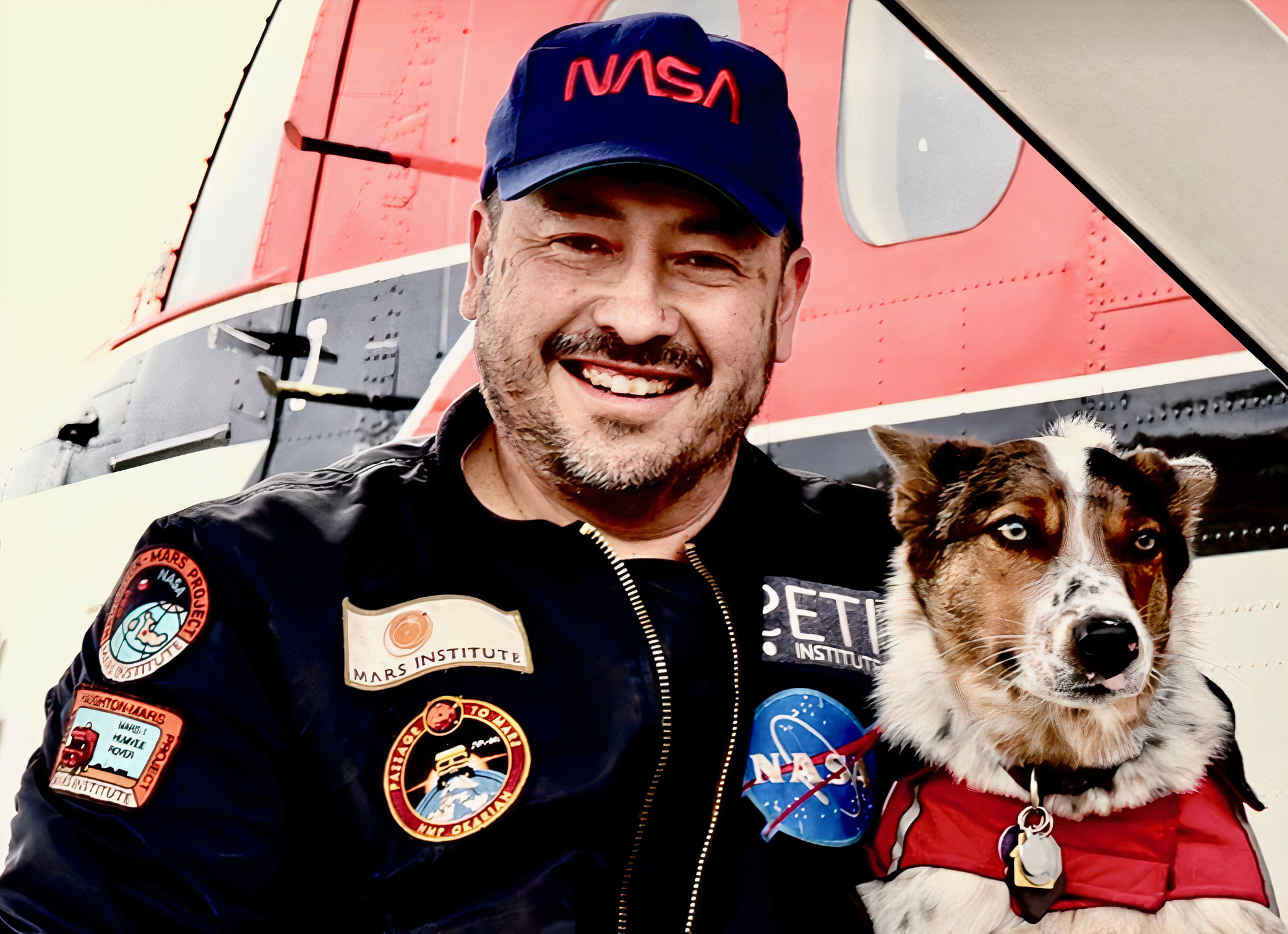On Monday (Aug. 1), a group of eight researchers and their associates headed north to the high Arctic to spend a month at the Haughton-Mars Project (HMP) base on Devon Island, about 15 degrees south of the North Pole. The group includes the founder of the base and expedition leader, Dr. Pascal Lee, a group of researchers from MIT’s Haystack Observatory, other researchers and support staff, and me, the sole media representative.
This will be the return of the HMP team to the base since 2019 due to COVID-19 restrictions, and its condition is uncertain — weather and polar bears (opens in new tab) can wreak havoc with the structures and support equipment. Generators and ATVs on-site have gone through multiple freeze/thaw cycles, and increasingly hungry polar bears may have slashed their way into some of the lightly constructed habitats — they’ve tried before. While satellite images don’t show any extensive damage, success is far from certain.
Before we can begin the string of four to six flights across two days that are necessary to reach the distant outpost, we must pack the needed gear and prepare ourselves for extreme weather. While the nearest weather station reports temperatures ranging from 34 to 46 degrees Fahrenheit (1 to 7 degrees Celsius), with humidity hovering at about 90%, the weather on Devon Island — which is the largest uninhabited island in the world — can be quite different, with high winds frequently causing temperatures to plunge due to wind chill.
Related: NASA’s Haughton-Mars project: Summertime on a ‘planet’ close to home
To travel to HMP, we’re restricted to 50 pounds (22.6 kilograms) of checked baggage for personal effects and a single carry-on. In normal travel, this is not a challenge since anything forgotten or overlooked can be picked up at a nearby Walmart or mom-and-pop store. But on Devon, we’ll be dealing with whatever we carry in, so cold weather clothing is critical, and anything mechanical or electronic can likely not be replaced. The HMP base does have spares of a few things, but we’re told not to count on them.
In my case, that means that camera gear and laptops are critical goods, and backups of every item that is wear or temperature-sensitive are essential. Batteries hate the cold, lenses hate the extensive wind-blown grit, and everything electronic loves to fail at critical times. Duplicate technology gets heavy quickly, but since a failure of a critical item would put me into vacation mode for a month, backups are a must. I’ve been preparing for weeks, and three days out from departure, I am packing, unpacking, eliminating, and repacking for the third time.
The base is operated by the Mars Institute and was founded and built in the late 1990s by Lee, a planetary geologist and co-founder of the institute. Lee is passionate about the project, and as he now jokes, “I’ve lived in California for 25 years, but had never spent a summer here until COVID.” When asked if he’s looking forward to getting back to his Mars analog base, he smiles broadly. “I would not say it’s pleasant, but yes, it’s a wonderful, otherworldly place, with much to offer for understanding the future exploration of Mars.”

The base, abbreviated HMP (you can find it on Google Maps under “Haughton-Mars Project Base Camp”) is sited on the rim of the Haughton Impact Crater, a 12.5-mile (20 kilometer) feature formed about 23 million years ago by an asteroid or comet impact, and resides at about 75 degrees latitude. It’s the largest impact structure in the northern regions, and along with many other Mars-like features on the island, makes Haughton possibly the best Red Planet analog on Earth.
The HMP base consists of a cluster of eight structures — a couple of hard buildings and a number of vinyl-covered frames that make up the rest of the camp. The Haughton-Mars Project is supported by NASA, the SETI Institute, the Mars Institute, and a variety of other sources, and NASA supplies several of the experiments to be conducted there each year, which augments the research being conducted there.
An advance team consisting of Lee, polar veteran and HMP Base Manager John Schutt, me, and a handful of others will complete the final leg of the journey to do an aerial survey of the base and, weather and ground conditions permitting, land at the HMP’s airstrip. Assuming everything is in acceptable order, the remaining participants will follow on a second Twin Otter flight, along with about 25 cases of radio astronomy equipment.
My next dispatch will detail our arrivals in Canada, dealing with the extensive COVID safety protocols, and our departure to Devon Island. See you then.
Follow us on Twitter @Spacedotcom (opens in new tab) or on Facebook (opens in new tab).

